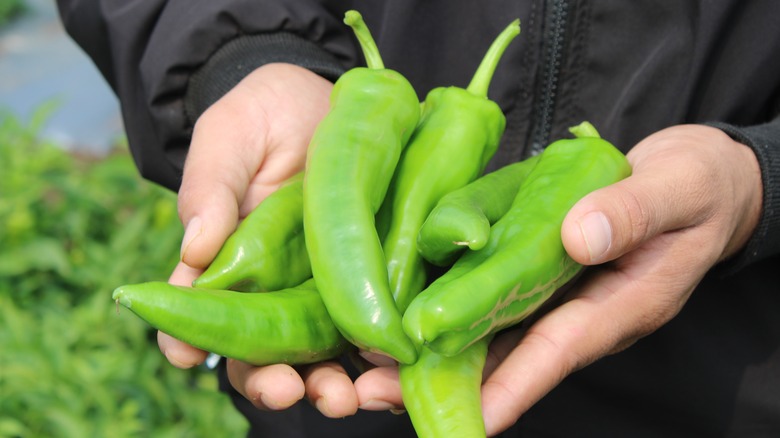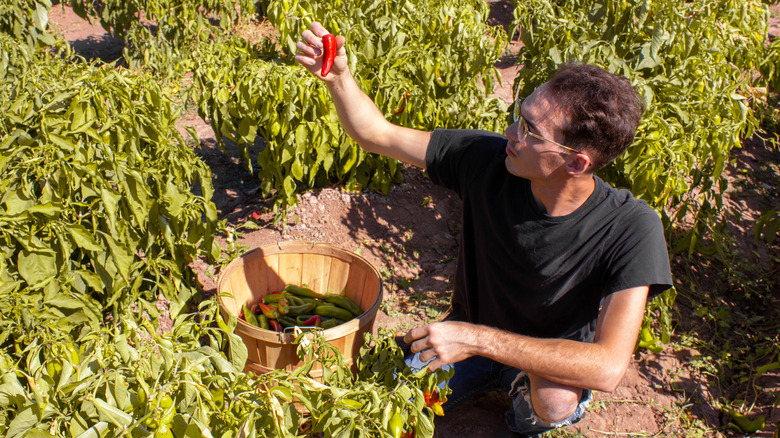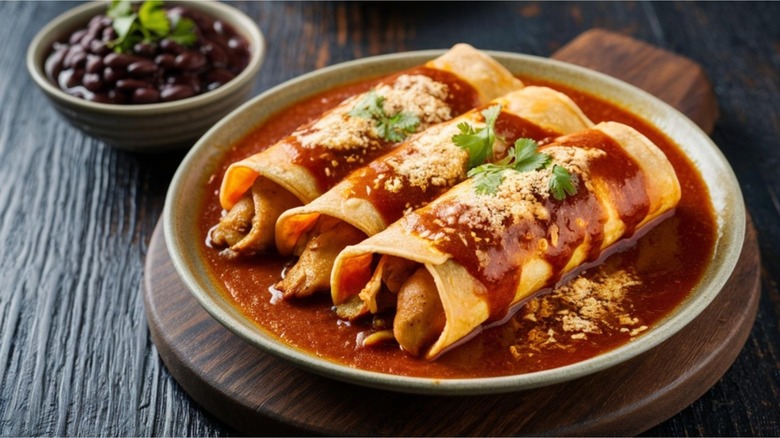The Only US State Where Farmers Can Grow Hatch Chiles
Chile peppers can add a nice kick to a meal. And once you start cooking with spice, you'll discover the magic of fiery ingredients like this delicious chile oil you won't be able to live without. Of course, one of the most notable sources of the addictive piquant flavor is the Hatch chile, grown exclusively in New Mexico.
The first thing you should know about Hatch chile, is that it's not a single variety of pepper. A bit similar to how Champagne must be made with grapes grown in the Champagne France, the term "Hatch chile" refers to a range of peppers grown in the Hatch Valley, a region that hugs the Rio Grande River from Arrey, New Mexico to Tonuco Mountain. As a result Hatch chile can be found in red and green variants and its spice level can vary from mild to fairly intense, though they generally are known to give off a smoky, sweet flavor.
The chile is so beloved in its native New Mexico that there is even a festival devoted to it aptly called The Hatch Chile Festival, the first of which was held in 1971. Festival attendees can usually be seen enjoying meals based around the Hatch chile, like the red chile enchilada, and wearing clothing patterned with Hatch chiles.
Why the Hatch Valley?
So how did no-name green chile varieties become Hatch chiles, which boasts more than 130 varietals and a dedicated festival? It all begins with Joseph Franzoy. While chiles have been grown in the Hatch Valley of New Mexico for centuries, it was an Austrian immigrant named Franzoy who became the first commercial chile farmer in the Hatch Valley in 1917. At the time, the land was primarily used for growing cottonwood trees rather than produce and there wasn't much fuss made of Franzoy's venture, but when green chiles took off in the '70s the Hatch Valley was ready to provide Hatch chiles took take off and become an integral part of the Hatch community's identity.
Beyond this origin story, there are a host of ecological reasons why New Mexico is the ideal environment for these chiles. For one, the Hatch Valley is filled with nutrient-rich soil that creates great conditions for growing the chile. In addition, the Hatch pepper benefits from the specific weather patterns of the valley, which is sunny during the day and cool at night. With its roots so firmly planted in New Mexico, it doesn't seem like the Hatch chile pepper is going anywhere.
Dishes to cook with a Hatch chile
It may seem daunting to cook with a spicy chile pepper. After all, spicy foods are simply a no-go-zone for some folks. If that's the case for you, fear not: You can increase your spice tolerance. If you're ready to begin incorporating Hatch chiles into your cooking routine, roasting them is always a good idea. In fact, roasting Hatch chiles is a popular roadside stand practice across New Mexico and the Southwest.
For a more advanced recipe, you could consider making a classic chiles rellenos recipe. Though it is time-consuming, it is worth the labor that goes into it. For this recipe, you'll need to roast the chiles and remove their skins. The next steps involve stuffing, sealing, and battering them in whipped egg whites. Lastly, you'll choose a salsa or sauce to plate with the chiles.
Alternatively, if you're feeling inspired by the Hatch Chile Festival, you could always try out some red chile enchiladas, using hatch chiles as your pepper of choice. For red chile enchiladas, Hatch chiles will play an important role in giving the red sauce its distinctive kick. No matter how you use your New Mexican Hatch chiles, you'll enjoy their distinctive, smoky flavor.


